Stir-frying, a cooking technique synonymous with Asian cuisine, is often associated with vegetables, meats, or noodles. However, this versatile method can elevate even the humblest of ingredients, such as apples, into a dish that balances sweetness, texture, and aroma. Stir-fried apples offer a unique twist to traditional apple preparations like pies or salads, combining caramelization, tender crispness, and a medley of flavors. This article delves into the intricacies of stir-frying apples, from selecting the right varieties to mastering cooking techniques and pairing suggestions. Whether you’re a seasoned chef or a home cook exploring new culinary horizons, this guide will equip you with the knowledge to create a dish that tantalizes the taste buds.
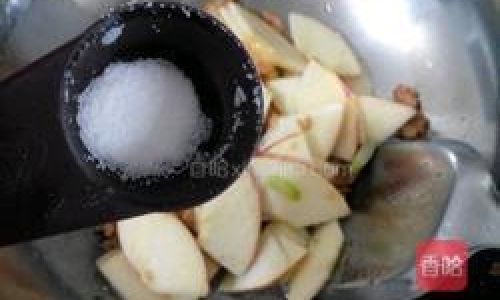
The Appeal of Stir-Fried Apples
Apples, with their natural sweetness and crisp texture, provide an ideal canvas for culinary experimentation. Stir-frying amplifies their inherent flavors while introducing a depth that baking or raw consumption cannot achieve. The high heat of stir-frying caramelizes the apples’ sugars, creating a golden-brown exterior while preserving a slightly firm interior. This contrast—soft yet retaining a hint of crunch—makes stir-fried apples a delightful addition to both sweet and savory dishes.
Moreover, stir-frying is a quick and efficient cooking method, making it perfect for busy individuals seeking a gourmet touch without spending hours in the kitchen. The technique also allows for endless creativity, enabling cooks to customize flavors with spices, herbs, and accompaniments. From breakfast bowls to dessert toppings, stir-fried apples offer unparalleled versatility.
Selecting the Perfect Apple Variety
The foundation of exceptional stir-fried apples lies in selecting the right variety. Not all apples are created equal, and their texture, sweetness, and acidity levels significantly impact the final dish. Here’s a breakdown of popular apple types and their suitability for stir-frying:
- Granny Smith: Known for their tartness and firm flesh, Granny Smith apples hold their shape well during cooking. Their crisp texture prevents them from becoming mushy, making them ideal for stir-fries where a slight crunch is desired.
- Honeycrisp: With a balance of sweetness and acidity, Honeycrisp apples offer a juicy yet firm texture. They caramelize beautifully, adding a rich flavor to stir-fries.
- Fuji: Fuji apples are exceptionally sweet and dense, making them perfect for caramelization. Their high sugar content ensures a golden exterior when stir-fried.
- Pink Lady: This variety combines sweetness with a subtle tang, and its firm texture ensures it remains intact during cooking.
- Gala: Softer than Granny Smith but still firm, Gala apples offer a mild sweetness that complements spices like cinnamon or nutmeg.
For stir-frying, avoid apples like Red Delicious or McIntosh, which tend to break down quickly and become mealy when heated.
Preparation: The Key to Consistency
Proper preparation ensures even cooking and optimal flavor development. Follow these steps:
- Washing and Drying: Rinse apples under cool water to remove wax or debris. Pat them dry thoroughly to prevent splattering during cooking.
- Peeling (Optional): While the skin adds fiber and nutrients, peeling is recommended for a smoother texture. Use a sharp peeler or paring knife for precision.
- Coring and Slicing: Core apples using an apple corer or a knife. Slice them into uniform wedges or thin segments (¼ to ½ inch thick). Consistency in thickness ensures even cooking.
- Preventing Browning: Toss apple slices in lemon juice or water mixed with a pinch of salt to prevent oxidation. Drain well before cooking.
Seasoning and Flavor Pairings
Stir-fried apples shine when paired with complementary flavors. Experiment with these combinations:
- Sweet and Spicy: A pinch of cinnamon, nutmeg, or cardamom enhances the apples’ natural sweetness. Add a drizzle of honey or maple syrup for caramelization.
- Savory Twists: A splash of soy sauce, balsamic glaze, or a sprinkle of sea salt can transform the dish into a savory side. Pair with bacon bits or caramelized onions for depth.
- Herbaceous Notes: Fresh herbs like thyme, rosemary, or mint add a refreshing contrast. Toss in a handful of chopped herbs during the final minute of cooking.
- Exotic Spices: Star anise, cloves, or ginger introduce warmth, ideal for autumn-inspired stir-fries.
Cooking Technique: Mastering the Stir-Fry
Stir-frying requires precision and attention to detail. Here’s how to achieve perfection:
- Heat the Pan: Use a wide, heavy-bottomed skillet or wok. Preheat it over medium-high heat until a drop of water sizzles and evaporates instantly.
- Choose the Right Fat: Butter imparts richness, while coconut oil or ghee add a nutty flavor. For a neutral base, use avocado or grapeseed oil.
- Sauté Aromatics: Start by cooking minced garlic, ginger, or shallots in the fat until fragrant. This layer of flavor infuses the apples.
- Add Apples: Arrange apple slices in a single layer to ensure even browning. Avoid overcrowding the pan, as this steams the apples instead of caramelizing them.
- Stir Gently: Use a wooden spoon or spatula to toss the apples occasionally. Allow them to sit undisturbed for 1–2 minutes between stirs to develop a golden crust.
- Control the Heat: Medium-high heat caramelizes the apples without burning them. Adjust the flame if the pan becomes too hot.
- Finish with Flavor: Add sweeteners, spices, or liquids (like apple cider or orange juice) during the final 2–3 minutes of cooking. Toss to coat evenly.
Cooking Time and Texture
The cooking time varies based on apple variety and desired texture:
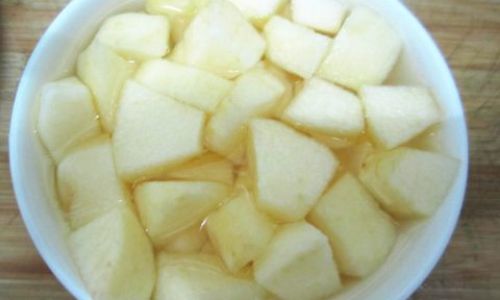
- Al Dente: 3–4 minutes for slices with a slight crunch.
- Tender: 5–6 minutes for softer yet still intact apples.
- Caramelized: 7–8 minutes for deeply browned, melt-in-the-mouth pieces.
Serving Suggestions
Stir-fried apples are incredibly versatile. Here are creative ways to serve them:
- Breakfast Bowl: Top oatmeal, yogurt, or chia pudding with stir-fried apples and a sprinkle of granola.
- Dessert: Pair with vanilla ice cream, whipped cream, or crème fraîche. Drizzle with caramel sauce for indulgence.
- Salad Enhancer: Toss into green salads with arugula, walnuts, and goat cheese.
- Savory Side: Serve alongside roasted pork, chicken, or tofu. The sweet-savory contrast elevates the meal.
- Brunch Dish: Incorporate into pancakes or waffles as a filling, or use as a gourmet topping for French toast.
Health Benefits of Stir-Fried Apples
Apples are a nutritional powerhouse, offering dietary fiber, vitamin C, and antioxidants. Stir-frying retains many of these benefits while minimizing added fats and sugars. Key advantages include:
- Digestive Health: Apples’ fiber aids digestion and promotes gut health.
- Antioxidant Boost: Quercetin and catechin in apples combat inflammation and oxidative stress.
- Low-Calorie Sweetness: Naturally sweet, stir-fried apples satisfy cravings without refined sugars.
Troubleshooting Common Issues
Even experienced cooks encounter hiccups. Here’s how to fix them:
- Soggy Apples: Overcrowding the pan or using too much liquid causes steam. Cook in batches and reduce added liquids.
- Burnt Edges: High heat or lack of stirring leads to burning. Lower the temperature and toss frequently.
- Bland Flavor: Under-seasoning or insufficient caramelization. Increase spices or cook longer to develop depth.
Advanced Techniques: Elevating the Dish
Take your stir-fried apples to the next level with these tips:
- Infused Oils: Cook apples in chili-infused oil or toasted sesame oil for an aromatic twist.
- Add-Ins: Incorporate dried cranberries, toasted pecans, or crispy bacon bits during the final minute of cooking.
- Glazes: Deglaze the pan with apple cider vinegar or brandy for a tangy kick.
- Culinary Crossovers: Experiment with global flavors:
- Asian-Inspired: Add a splash of soy sauce, sesame seeds, and a pinch of five-spice powder.
- Middle Eastern: Toss with cinnamon, honey, and a handful of toasted pistachios.
- European: Serve with a dollop of mascarpone cheese and a sprinkle of lemon zest.
Storing and Reheating
Stir-fried apples can be stored in an airtight container in the refrigerator for up to 3 days. Reheat gently in a skillet over low heat to maintain texture. Avoid microwaving, as this can make them mushy.
Conclusion
Stir-fried apples are a testament to the magic of simple ingredients transformed by skillful technique. By selecting the right apples, mastering heat control, and experimenting with flavors, you can create a dish that delights the senses and adapts to any meal. Whether enjoyed as a breakfast treat, dessert, or savory accompaniment, stir-fried apples offer a canvas for culinary creativity. So grab your wok, sharpen your knife, and embark on a journey to redefine the humble apple—one golden, caramelized slice at a time.



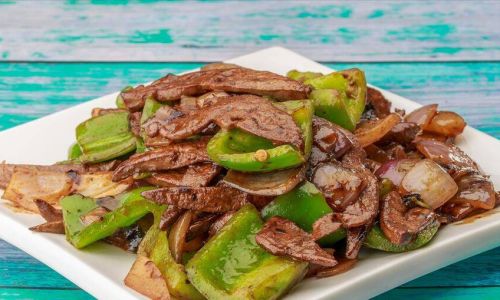
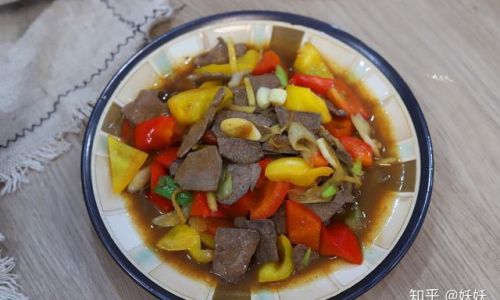
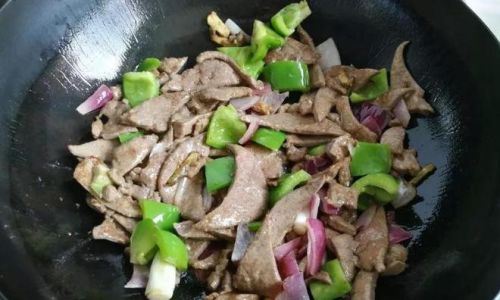
0 comments